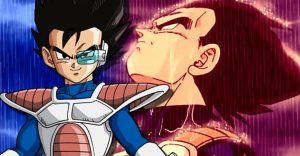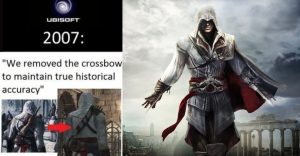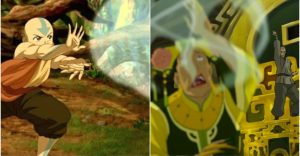Dune Ending Explained
Here’s a breakdown of what happened in Dune‘s ending and what it all means. The open ending clearly implies there’s more story to come, and that’s exactly the case: Dune only adapts the first part of Frank Herbert’s seminal novel, with Warner Bros. and director Denis Villeneuve having agreed to a plan to adapt the sprawling story across two films. Still, there are a number of questions that audiences will almost certainly be asking about the ending of Dune and where the characters and story go next.
Dune follows Timothée Chalamet’s Paul Atreides, the son of the noble House Atreides, in a feudal system galaxy overseen by the Padishah Emperor Shadam IV. When Paul’s family, led by Oscar Isaac’s Duke Leto, is asked to take stewardship over the planet Arrakis (also known as Dune) by the emperor of the known universe, Leto senses a trap but can do nothing to stop it. When they arrive on the planet, though, they are met with a complicated dynamic.
The Duke must work closely with the people native to Arrakis, the Fremen, in order to mine the spice melange, a coveted resource in Dune‘s universe. The previous stewards of the planet, the Harkonnens, are the mortal enemies of House Atreides and their relationship with the Fremen was contentious. Although Duke Leto tries to fix this, he is too late and the emperor and the Harkonnen forces attack Arrakis. Duke Leto and much of the rest of House Atreides die in the conflict, sending Paul and his mother, Lady Jessica (Rebecca Ferguson), fleeing into the desert. There they must seek safety with the Fremen.
Click here to watch Dune Ending & Sequel Set-Up on YouTube.
Dune’s Ending Explained

Director Denis Villeneuve concludes his adaptation of Frank Herbert’s novel with a quieter moment than what has come before. After being chased into the desert by the Harkonnen forces and the Sardaukar, Jessica and Paul survive a sandworm attack only to run into a group of seemingly hostile Fremen. While much of Dune spent time introducing various factions at play in the world of the movie, Villeneuve’s movie barely scratched the surface when it came to exploring the indigenous people of Arrakis. Still, enough groundwork had been laid with characters like Liet Kynes and Stilgar that it was an obvious choice to end before Paul and Jessica head to the Fremen’s Sietch.
As for the ending itself, Paul and Jessica find themselves desperate for help in surviving in the inhospitable desert. The Fremen know better than anyone how to survive the landscape, but not all of them are immediately welcoming of the outsiders. Babs Olusanmokun’s Jamis is one of those who are hesitant to welcome Paul and Jessica into the Sietch and offers to fight Paul in the hopes of stopping them from coming. Paul and Jamis duel and the young Atreides is hesitant to kill the Fremen – as Jessica notes, he has never killed anyone before. In this case, though, it’s life or death and Paul chooses life, ultimately defeating Jamis and earning respect from the Fremen who observed the duel.
How Dune’s Ending Fits Into The Narrative

By earning the respect of the Fremen, Paul and Lady Jessica are welcomed into the Sietch. This sets Paul up to become their messianic young leader down the road, one who they will follow into a galaxy-wide crusade. It also earns him the respect of Chani, his future lover and the mother of his children. Most importantly, though, it prepares him for what’s to come.
Ultimately, the story in the Dune novel is two-fold, part coming-of-age story as Paul comes into his own as a leader, and part critique of the hero’s journey. Paul making the difficult decision to kill someone not only proves he can be a pragmatic leader when it comes to protecting those he loves, like his mother, but it also signals a sign of maturity. Earlier in the film, in a conversation with his father, Oscar Isaac’s Duke Leto, Paul expresses unease at becoming the leader of House Atreides. By the end of the film, though, Paul is clearly ready to be a leader, accepting Jason Momoa’s Duncan Idaho when he calls Paul, “My Lord Duke,” and also looking after the one person from his family who is still alive, Lady Jessica.
However, Jamis’ death at the hands of Paul is also a sinister foreshadowing of Paul’s future. The duel was largely out of Paul’s control and he was forced into a position where he had to kill someone. This mirrors his journey as the Kwisatz Haderach – the prophesied messiah of the Bene Gesserit. Certain decisions Paul is forced into will lead to the aforementioned crusade in his name later on, resulting in the deaths of billions across the universe. Jamis’ death is the first of many.
Where Are Paul and Lady Jessica Going?

After Paul’s fight with Jamis, the group of Fremen are leading him and his mother further into the desert. They are likely heading to Sietch Tabr, one of the largest Fremen strongholds in the inhospitable desert and where much of the story of Dune 2 will take place. The inhospitable conditions of the desert make the environment dangerous for anyone not familiar with it. Staying at the Sietch will not only give Paul and Lady Jessica safety from the sandworms, but it will also protect them from any other enemies, including House Harkonnen.
What Do Paul’s Dreams Mean?
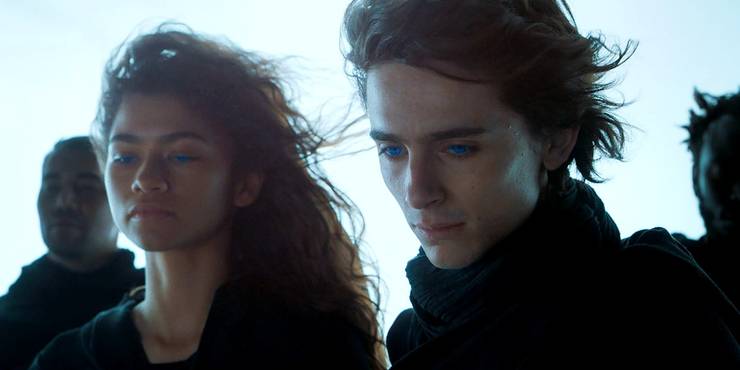
Much of the movie’s marketing leaned heavily on the dreams and premonitions of Dune‘s Paul Atreides, but most of what he sees doesn’t yet come to fruition in the movie. While he does meet Chani and Jamis in the final scene of the film, much of what is shown in his dreams is actually still a while off from happening. Paul’s meeting of the Fremen is also crucial to the realization of these dreams. The young Atreides is destined to become a messianic leader for the people indigenous to Arrakis, inspiring their bloody crusade.
This crusade is teased in two pivotal dreams. One is when Paul and a group of soldiers stage an attack in the desert. Paul can be seen wearing gold armor as he and other soldiers come up from under the sand, a known Fremen guerrilla fighting technique. Another shows Paul, Chani, and some of their followers looking down from a ship at soldiers on Caladan. They are waving Atreides banners and cheering for their leader. The rest of Paul’s dreams merely hint at the importance of Chani in his story and how their relationship will be pivotal in the future.
What’s Next For Arrakis?

With the Atreides’ rule over Arrakis now diminished, the Harkonnens will now return to rule over the desert planet. The underlying malevolent plan in the Dune 2021 movie was actually about reinstating the Harkonnens and eliminating the Atreides. The emperor was threatened by Duke Leto’s popularity within the Landsraad, the political body representing all of the Great Houses. The political maneuver of putting the Atreides in charge of Arrakis was a two-pronged effort, one that would eliminate a threat to the emperor’s rule while currying favor with the brutal and powerful House Harkonnen.
Setup For Dune 2

Dune is only half the story and that’s ultimately for the best. Herbert’s novel is dense and complex, setting up a world that is entirely unfamiliar. Much of Villeneuve’s film accomplishes this, but it barely touches on the complexity of the Fremen people. Dune 2 will rectify that. As Paul and Lady Jessica become further entrenched with the Fremen, they will earn their support, as Paul did in Dune‘s ending during his duel with Jamis.
By gaining their support, Paul will be able to rally the Fremen against the Harkonnens and while he has his own motivations for doing this, so do the people of Arrakis. Prior to the Atreides’ arrival on the planet, the Harkonnens were brutal overseers of the spice trade, inciting the rage of the Fremen. Paul will capitalize on that for his own gains, leading to his messianic role as Muad’Dib and setting up much of what’s to come next for the people of Arrakis.
The Real Meaning Of Dune’s Ending
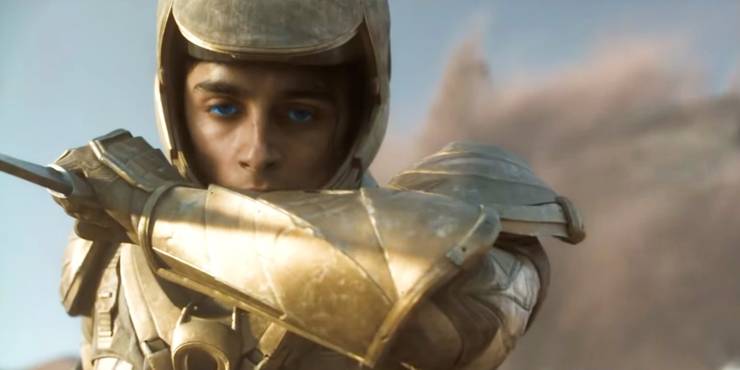
With the Dune adaptation split into two parts, it truly only explores the themes of the novel halfway. Paul goes on a typical hero’s journey in the first part of Herbert’s novel and that is intentional. Herbert plays into this archetype only to deconstruct it in the second half of Dune and the rest of the series. Villeneuve seems to be on a similar track. While Paul comes into his own as a leader in Dune‘s ending, he also is forced to kill someone. Not only does this paint a picture of the type of difficult decisions leaders have to make in this brutal world, but it also drives home the point that Paul’s “hero’s journey” isn’t necessarily a heroic tale at all.
Paul’s leadership will result in the death of billions, but it will first start as a revenge mission against those who harmed his family – the Harkonnens and the emperor. Dune‘s ending isn’t a happy one nor is it meant to be. Paul has brought his mother to safety, but he has also set in motion events that he is powerless to stop. It also sets up the underlying message that those with vast power can never be heroes as brutal, sometimes ruthless decisions will always have to be made by anyone with that much power or influence. This drives home Herbet’s idea that there are no true heroes – just those who see themselves as the heroes of their own stories.
About The Author












